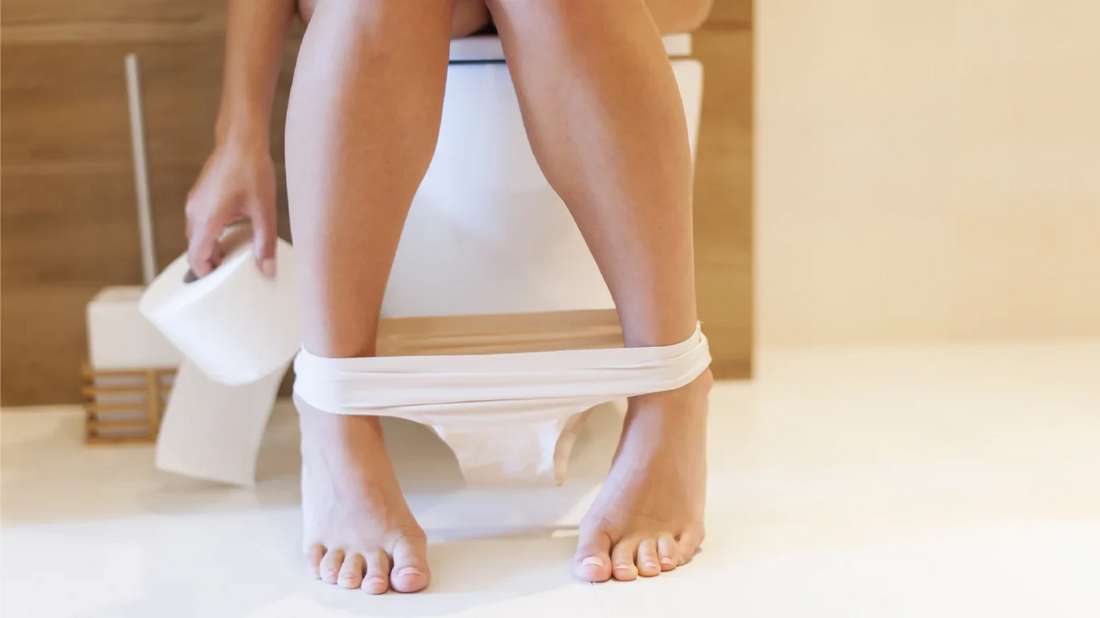
How Do I Know If I Have a UTI?
If you’re experiencing urgent, frequent urination and discomfort down below that’s affecting your day-to-day life, you might be wondering if you have an infection. In this article, we take a look at common signs of a urinary tract infection (UTI).
What is a UTI?
A urinary tract infection (UTI) is a common bacterial infection that happens when bacteria enters the urethra and travels to the bladder. It is typically caused by bacteria from the gut that transfers between the anus and the urethra.
Women are significantly more likely to experience a UTI than men, with nearly one third of women having had at least one UTI episode that requires antimicrobial therapy by the age of 24¹.
UTIs are more common for women because we have a shorter urethra than men, which means the bacteria can reach the bladder or kidneys more easily.
If you think you might have a UTI for the first time, you are not alone! Acute UTI occurs in up to 50% of women², so it is very common.
What are the signs of a UTI?
The most common signs of a UTI include the following³:
(These symptoms may not be indications of a UTI for those who are pregnant, those over 65 or catheterised people)
- Pain or burning when you urinate (dysuria)
- Frequent urination
- Need to urinate more often in the night (nocturia)
- Urgency to urinate
- Pressure in your lower stomach
- Cloudy urine
- Urine with a strong odour
- Feeling unable to empty your bladder
While they are incredibly irritating and inconvenient, UTIs are a very common infection, so don’t panic if you have one for the first time – you are not alone.
Unfortunately, UTIs can be incredibly painful and it is often very difficult to get a doctor’s appointment, but as first aid, it can help to drink a lot of water. Painkillers can initially help to reduce symptoms too³, but it is important you see a doctor as soon as possible to check if a) you have a bacterial infection and b) what bacteria might cause the infection so you can get the right treatment plan.
If you have any of the following symptoms – your UTI may have progressed to a kidney infection, which can be serious if not treated:
- A high temperature or feeling feverish
- A low temperature below 36°C
- Feeling confused or drowsy
- Pain in the back or lower stomach
- Blood in your urine
In this case, you should seek more urgent advice from your doctor or call 111 if you are in the UK. Urgent care centres, A&E or/and pharmacies which are open 24/7 can be helpful if symptoms appear during the night or GP appointments are not available.
Can you do an at-home UTI test?
If you think you have an active infection such as a UTI, you should see your healthcare professional. However, at P.Happi we know all too well that sometimes UTIs can strike at the most inconvenient times or when a GP appointment might not be available on the same day.
In that case, there are now also phone-empowered dipstick tests available at retailers, such as ‘DipUTI’ from healthy.io which can be easily purchased via Boots. These tests can be done at home with a smartphone, results can be shared with a pharmacist for diagnosis and, based on a positive result, an antibiotic prescription can be obtained on the same day.
However, if the results are negative but your symptoms persist, you should still go and see a doctor, as the dipstick test is sadly not necessarily that reliable. In fact, it is estimated that, for dipstick urine analysis, sensitivity can be as low as 75%⁴. Another study concluded that Nitrite dipstick test results showed high specificity but low sensitivity⁵ and were associated with several false positive and negative results.
It is also important to note that dipstick tests can only be used for women who are not pregnant and under 65 years of age⁶. Women with recurrent infections are advised to go to the doctor to ensure there are no underlying issues present, such as kidney problems or functional bladder problems.
You should not use a urine dipstick if you are over 65 years old. Dipsticks also become more unreliable with increasing age over 65 years. Up to half of older adults, and most with a urinary catheter, will have bacteria present in the bladder/urine without an infection. This “asymptomatic bacteriuria” is not harmful, and although it causes a positive urine dipstick, antibiotics are not beneficial and may cause harm.
If you think you might have a UTI but haven’t had a chance to see a doctor yet, in the meantime you can take paracetamol to reduce pain, drink plenty of fluids and avoid having sex – annoying, we know, but it will help to ease your symptoms!
Mostly a dipstick test and symptoms are only used for clinical diagnosis, but a urine culture should be definitely made in all women with suspected lower UTI who:
- Are pregnant.
- Are 65 years old or above.
- Have symptoms that are persistent or do not resolve with antibiotic treatment.
- Have recurrent UTI (2 episodes in 6 months or 3 in 12 months).
What if I keep getting UTIs?
If you suffer from recurring UTIs, you’ll be all too aware of the tell-tale signs, but you might also be wondering why they keep coming back and whether you have a chronic UTI.
If this situation rings true with you, you might also want to take proactive steps to strengthen your urovaginal microbiota. The vaginal microbiota should be dominated by lactobacillus (especially L.crispatus, a ‘friendly’ bacteria that colonises the vagina) and if too many other bacteria start to invade, this can cause our vaginal and urinary microbiome to become unbalanced. This, in turn, has an impact on your protection against infection.
There are also a few lifestyle changes which might help to reduce the risk of getting an infection.
You might consider a Microbiome Test Kit to detect the DNA of microbes present in your vagina – if the microbiome is unbalanced, you can look at ways to combat this. For example, there are certain lactobacillus probiotics, ideally with Lactobacillus crispatus you can take.
If you are happy to share – do let us know your most common signs of a UTI in the comments below, as this may help other women who are experiencing a urinary infection for the first time!
Sources
- https://pubmed.ncbi.nlm.nih.gov/12113866/
- https://cks.nice.org.uk/topics/urinary-tract-infection-lower-women/background-information/prevalence/
- https://cks.nice.org.uk/topics/urinary-tract-infection-lower-women/management/uti-no-visible-haematuria-not-pregnant-or-catheterized/
- https://emj.bmj.com/content/20/4/362.2
- https://www.ncbi.nlm.nih.gov/pmc/articles/PMC8482205/
- https://cks.nice.org.uk/topics/urinary-tract-infection-lower-women/diagnosis/assessment/




